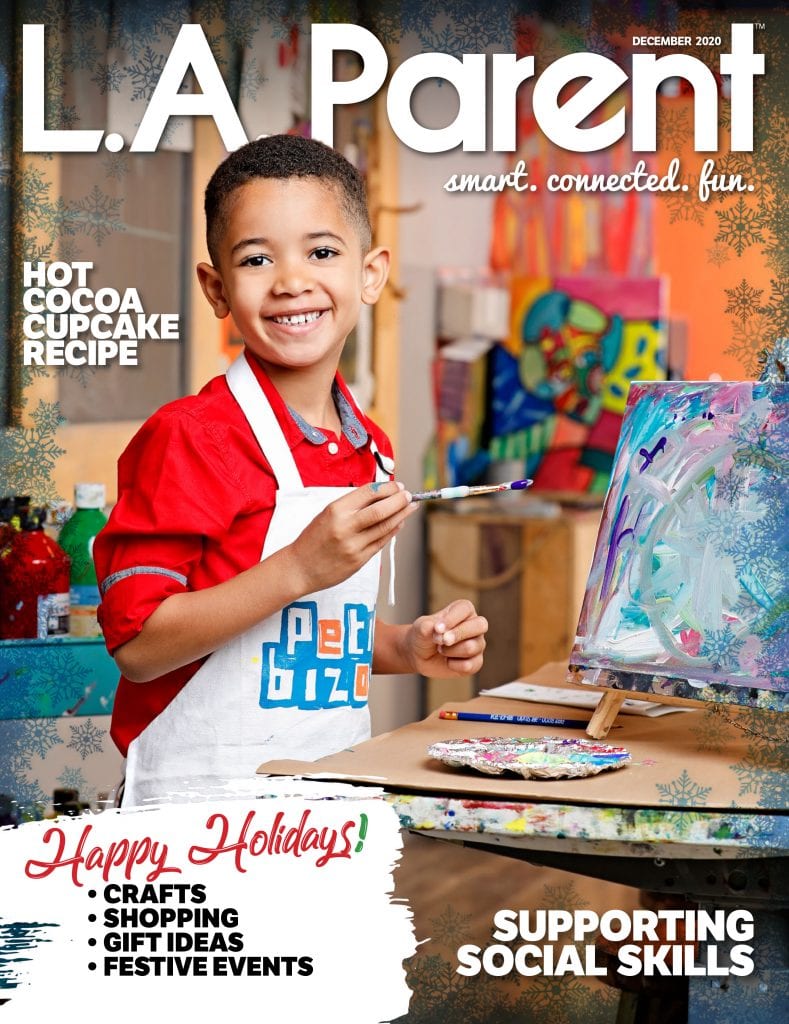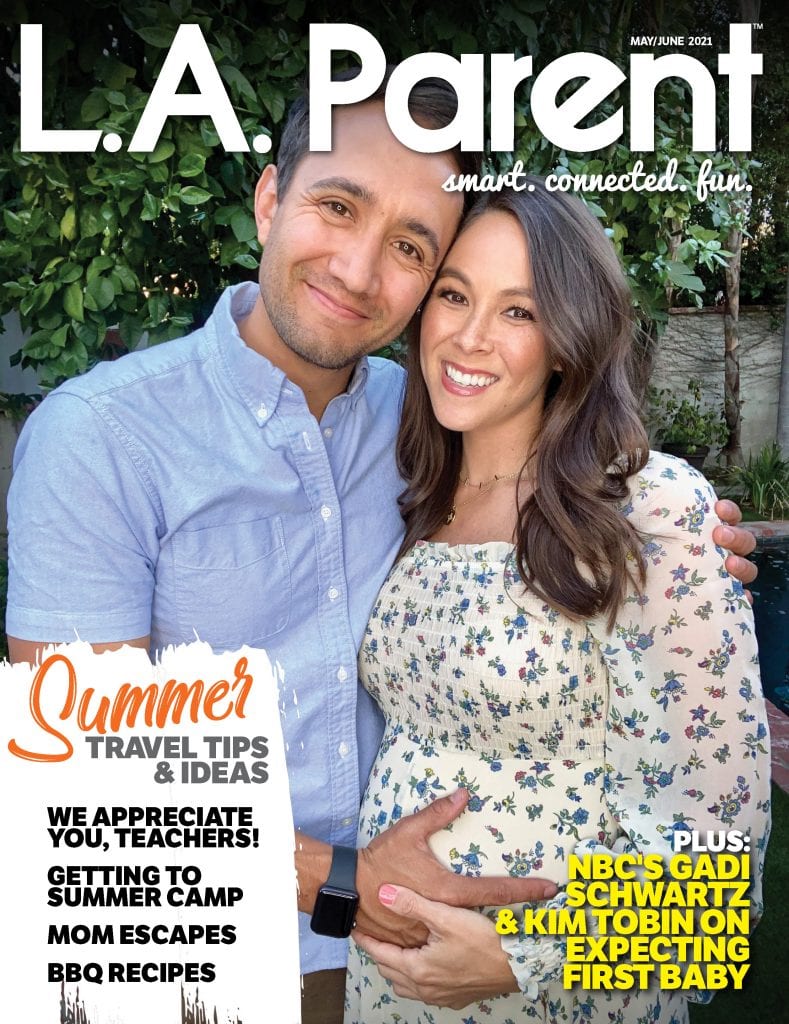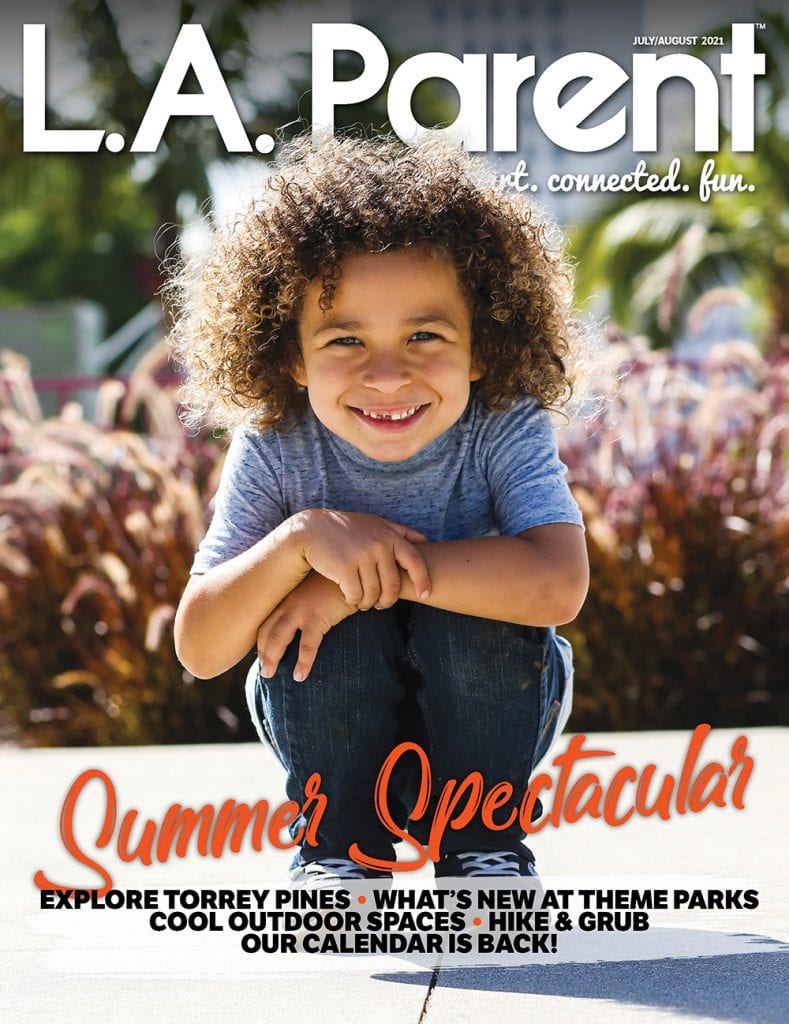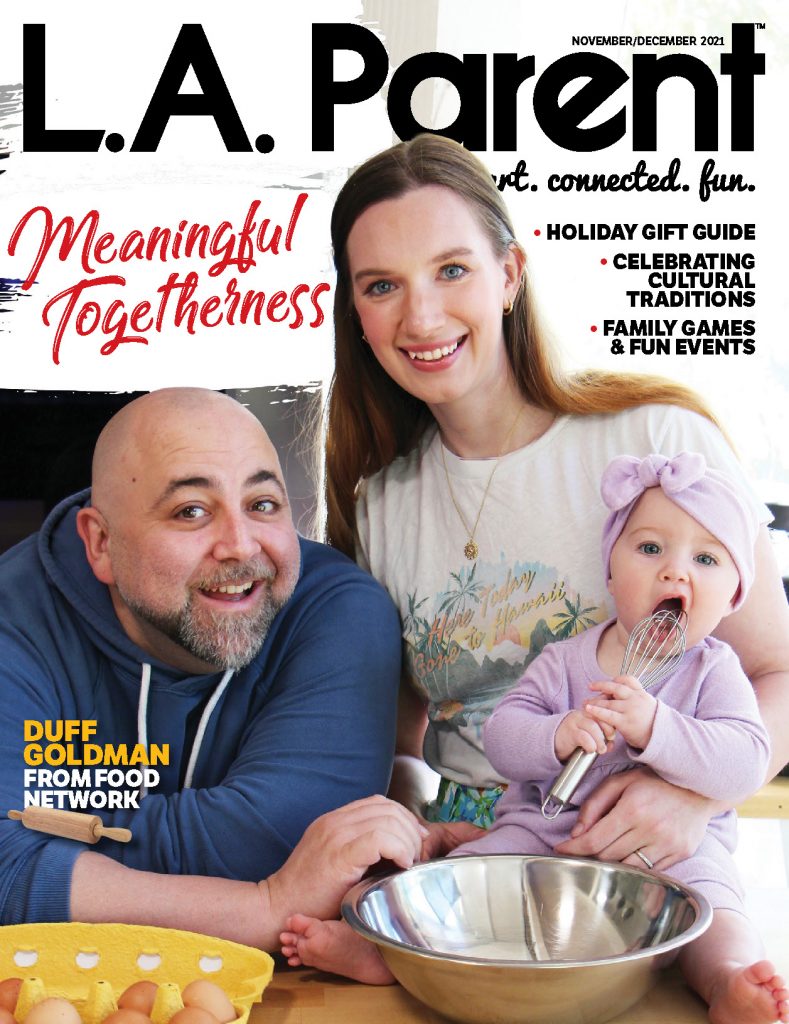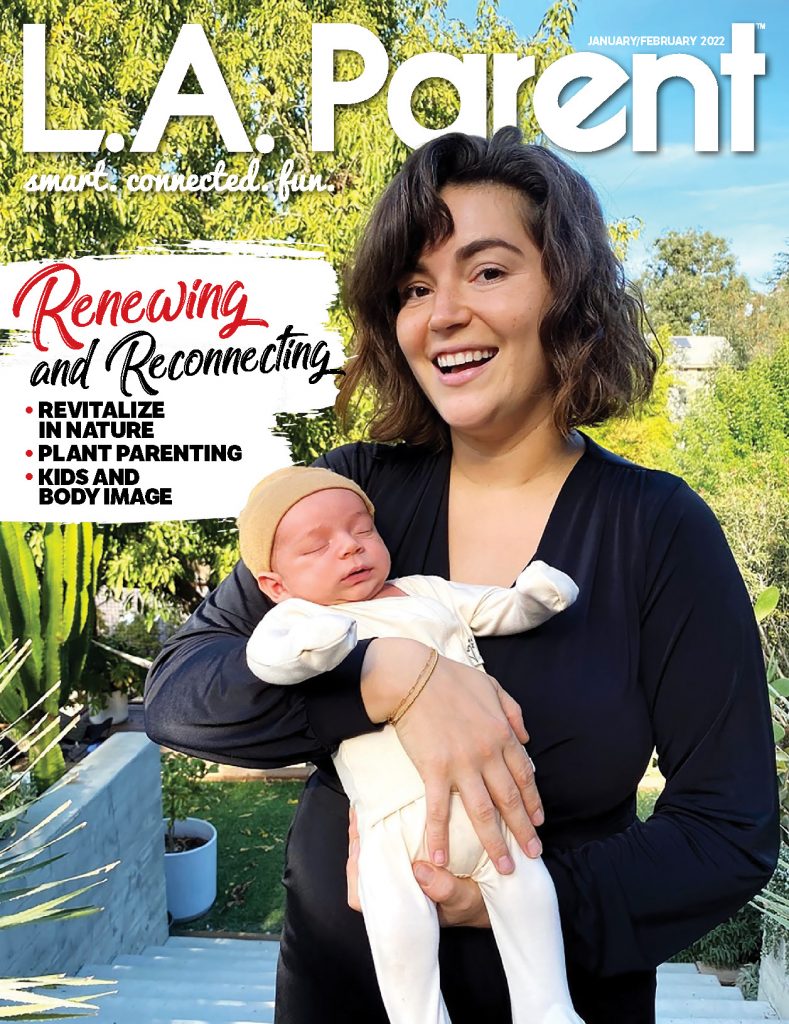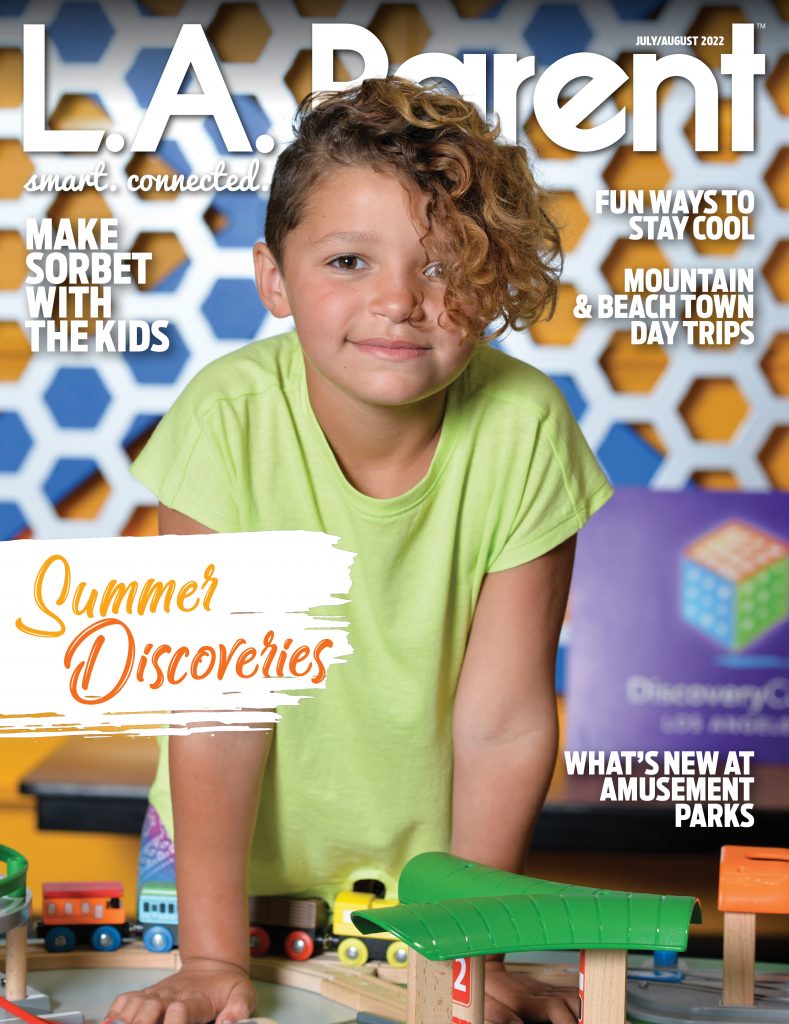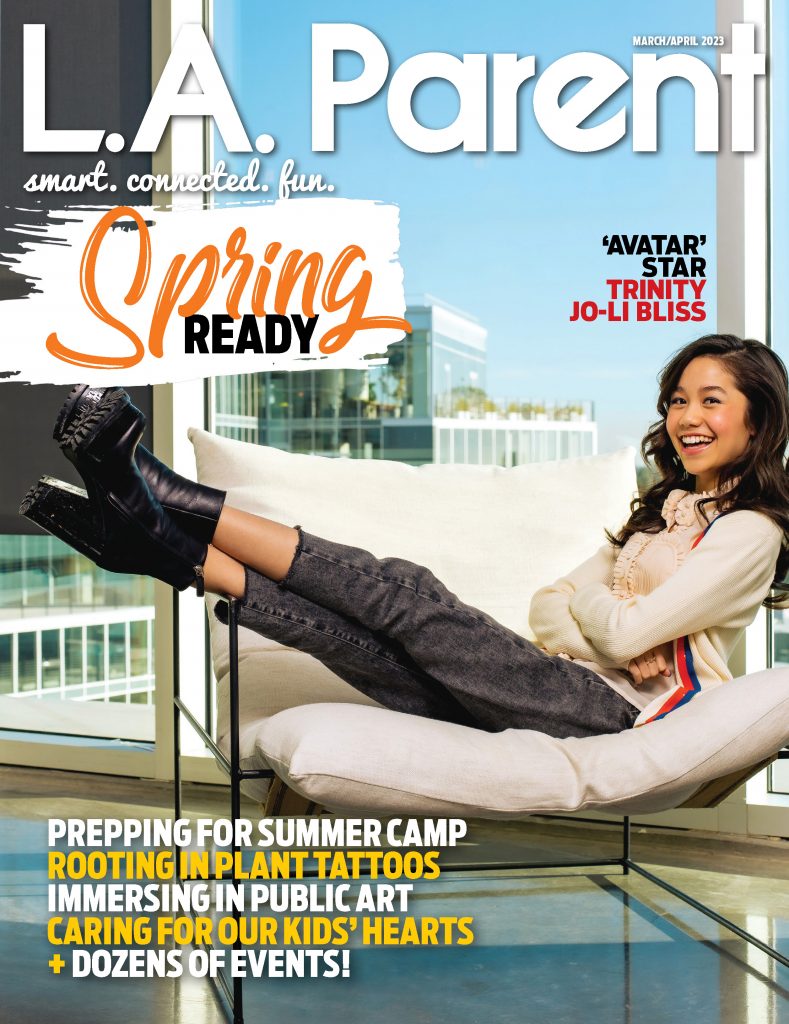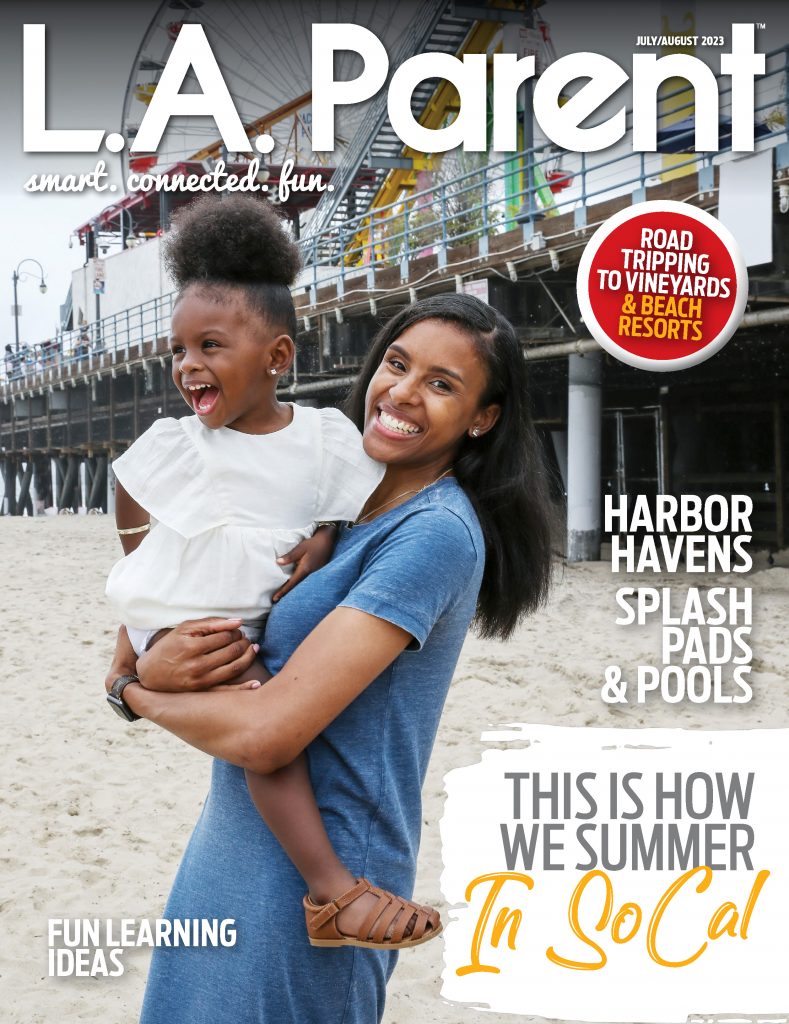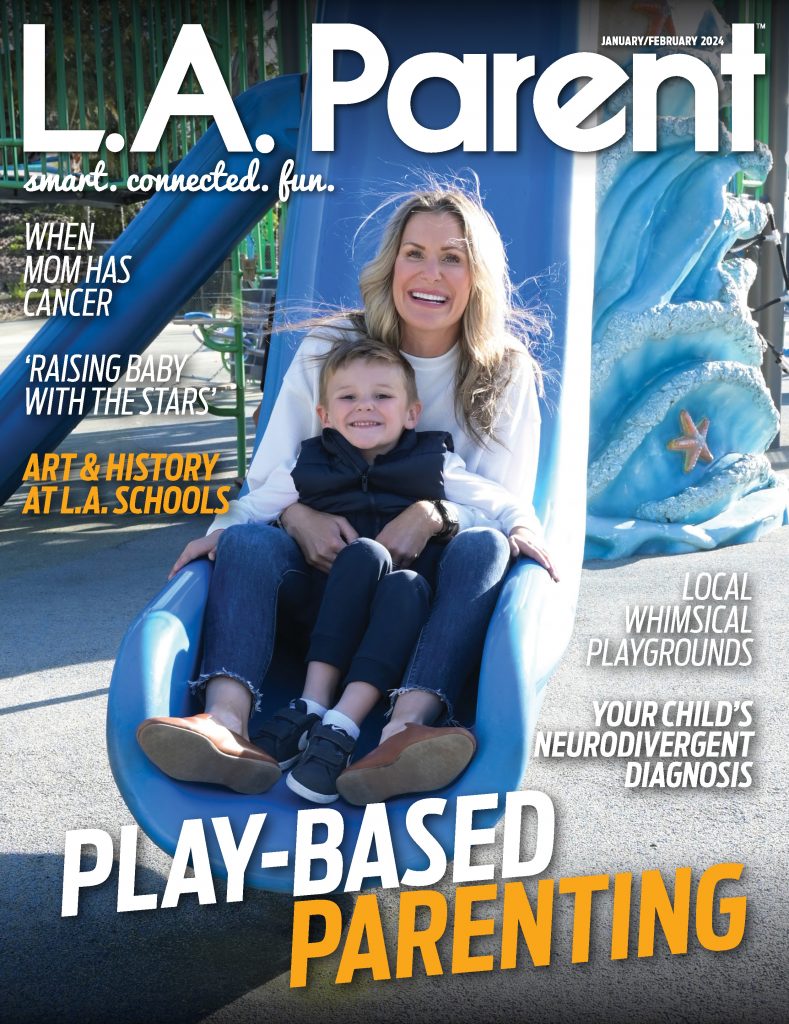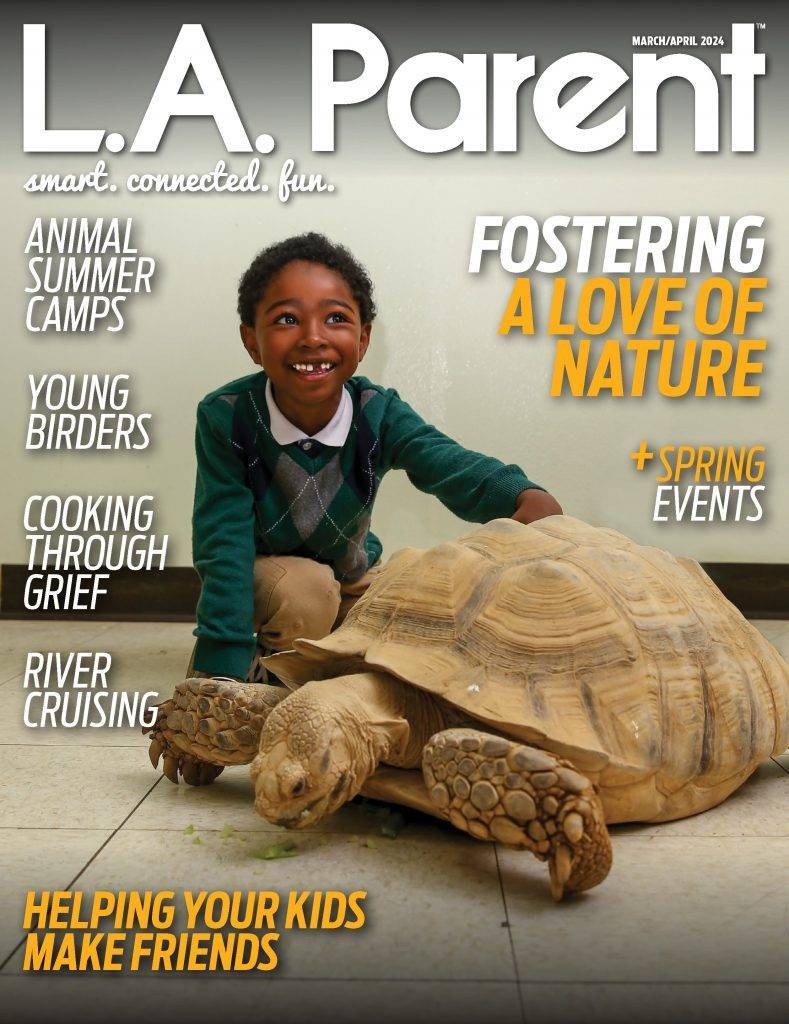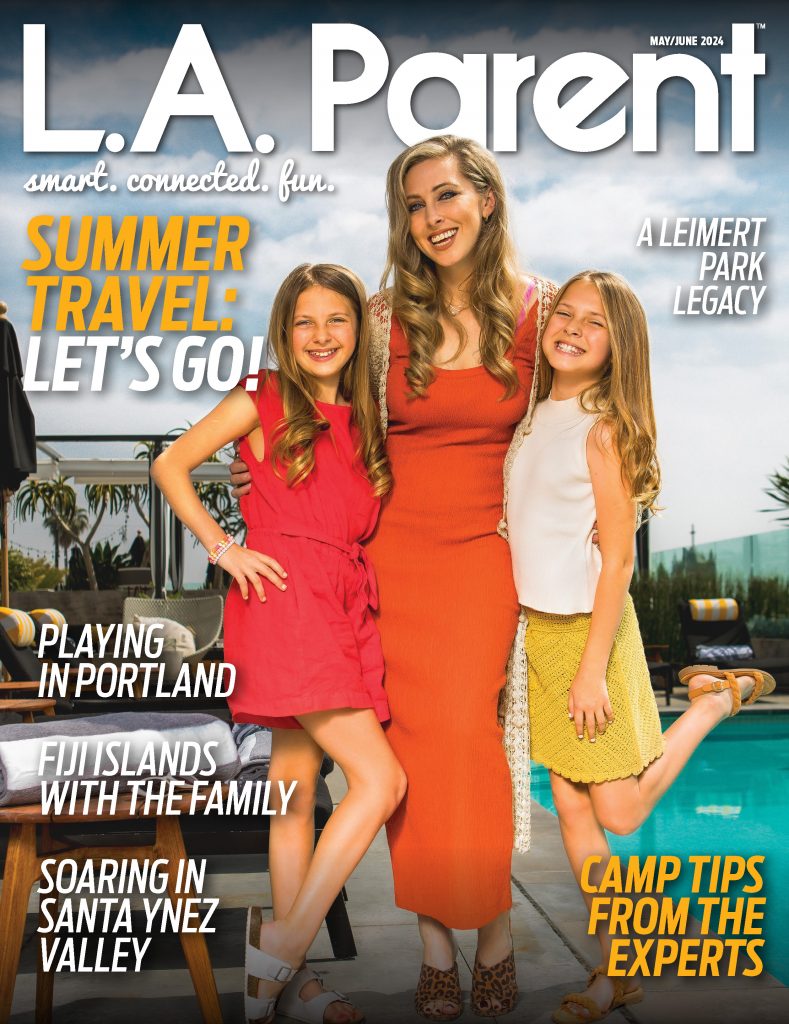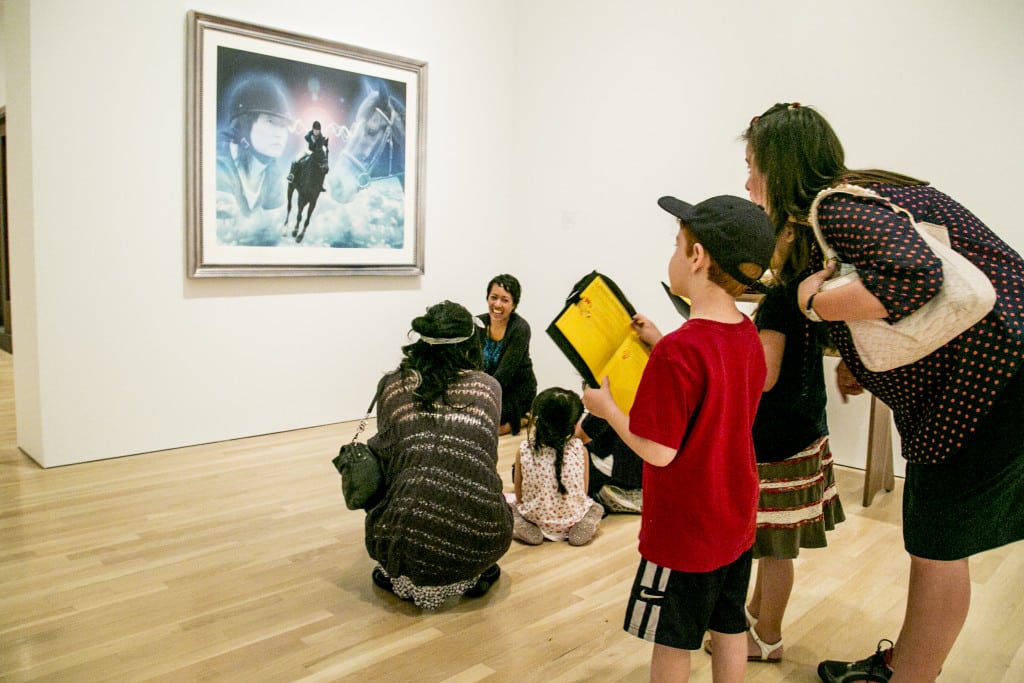
Families explore the exhibit “Art for Your Revolution” through the Hammer Museum’s Close Encounters program. PHOTO BY BARBARA KATZ
For children interested in any kind of extracurricular activity – from sports to science to the arts – parent involvement and support are vital. While this often doesn’t go much farther than picking up and dropping kids off, signing a few forms and maybe buying snacks for the team, parents face a world of opportunities for bringing their children’s enrichment experiences home as well.
Decades of research shows how vital it is for parents to play an active role in early education. These studies are increasingly pointing out ways that parents can help not just with school work, but by encouraging their children’s blossoming interests outside of school.
Art Activities
That might even mean parents and children participating in enrichment activities together. “Look for enrichment classes you can take with your child, shared experiences you can continue at home together,” says Jon Lapointe of The Armory Center for the Arts, which has been offering enrichment classes for all ages at its present Pasadena location for more than 25 years and is brimming over with fun ideas for kids. “The Armory’s ‘Art for Two’ classes help parents and toddlers explore all kinds of art materials together under the guidance of trained Armory Teaching Artists,” says Lapointe.
It takes no more than an investment in some art supplies and a little time to reinforce and expand on what you’ve learned together. And this parental reinforcement is key to the success of such programs, giving children a love for learning that transforms activities from an obligation to a treasured time of exploration. “Kudos to the parents that identify what their kids are passionate about and support their endeavors,” says Lapointe. “You can’t force it.”
Museum Visits
A visit to a museum – and there are all sorts in the L.A. area – is another opportunity to make enrichment come alive. “At the Hammer Museum, kids of all ages engage in activities inside and outside of our galleries,” says Theresa Sotto, assistant director of academic programs at the Westwood attraction.
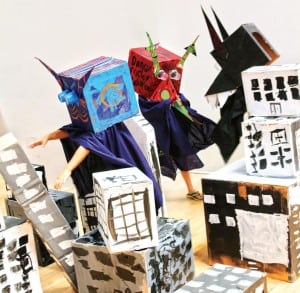
In the culminating performance of Armory Teaching Artist David P. Earle’s “Monster Destruction” class for ages 8-11, children create costumes and sets, then film their own Godzilla-style monster movies. PHOTO COURTESY ARMORY CENTER FOR THE ARTS
Sotto says that enrichment can take place even before kids and their parents get to the museum. “To best prepare kids for a visit to the Hammer or any museum, we recommend activities that encourage kids to look closely, notice and share details, and think creatively,” she says. “One of my favorite quick and easy activities can take place on your commute to the museum. Kids can use the windshield or window to frame the world around them.”
This can lead to a discussion of what children are looking at, and what stands out for them. Parents can ask what details they observe through the window at a stoplight, and talk about the shapes and forms they see and how they all fit together.
Simple conversations about what kids see on the drive can open doors to seeing the exhibits at a museum in a whole new light. “When you get to the museum,” Sotto says, “kids can use their fingers as framing devices to encourage them to keep looking closely at the art and to create new compositions.”
The Hammer also offers a program called “Look Together,” a series of interactive games kids and parents can play to further enrich the learning experience. These simple games involve using adjectives and artwork to describe each other, or carefully observing what you and your companions saw. All of these can easily be continued at home, when parents and kids can discuss together what they learned, how many different works they saw and what their favorite piece was.
Online Explorations
Art and stories can be the earliest expressions of the ideas children have. And they need nurturing. Even a small amount of encouragement can be hugely beneficial for children learning how to express themselves and what they’ve learned.
“The old notion of ‘celebrating’ the work that a child does during a museum visit, like when they create an art project, by displaying it in the home, can help to remind children and their parents of their interest in an activity or content area,” says Jason Porter, assistant director of education at the Skirball Cultural Center. “This can lead to completing similar projects independently, further the conversation about whatever the topic was, or lead to enriching investigation at the library or on the Internet.”
Online exploring can be another way to enhance the experience of a museum trip or other adventure. “So many institutions provide additional materials for families, such as post-visit activity guides or online resources,” Porter says. “Spending time with your child after a museum visit tooling around on the website or looking through the material can help to reinforce what the exhibition or program was meant to teach in the first place.”
The conversations inspired by enrichment activities are easy to carry on at home, and more fulfilling than much of what young children are normally doing on their “off” time. “Our children spend so much time in front of screens, you may as well guide that time to be about the content of your collective experiences rather than games or activities that you have no frame of reference for,” says Porter. “It’s so great to investigate and explore together when you’ve found something that you identify as a common interest.”
Options for Teens and Tweens

At the Skirball Cultural Center, kids and parents can create projects together in the Family Art Studio. PHOTO BY ANDREA CIMINI/SKIRBALL CULTURAL CENTER
Enrichment at home isn’t just useful for young children, it can be applied to students as far along in their education as high school. This is a time when a student’s natural skills and interests have often revealed themselves, so parents can focus on areas where their kids have already demonstrated some passion.
Families in Schools, an L.A.-based nonprofit devoted to involving parents and communities in their children’s education, offers a number of ways parents can carry forward what kids are learning during and after school, focusing on exploring further, creating, writing and going to the places kids are learning about.
Oscar Cruz, president and CEO of Families in Schools, suggests helping your child create a Wikipedia article about a topic of interest that they didn’t find well represented online. Families might also explore a museum or historical attraction related to something they’ve read, such as going to the Museum of Tolerance after reading Anne Frank’s “The Diary of a Young Girl.”
If a student has read a book of fiction based on a true story, they can go online to investigate what the real character or characters were like, comparing the factual and fictional information. Parents can then engage their student in conversation about why changes were made to the story, and what the author’s intent might have been. Parents can also encourage students to write and share a blog post about something they’ve learned, or their own review of a classic book.
Whatever your child’s interests may be, follow and support them. You might be helping build a lifelong passion – or a career. “I vividly remember taking a preschool art enrichment class in the early 1970s,” says the Armory’s Lepointe. “We looked at globes and maps, then we painted a rock to make our own ‘globe.’ This was my first art experience. I was 4, and I was hooked. I’ve made my living as an artist and designer for almost 20 years. I can trace everything back to that one workshop at age 4.”
Mike Rothschild is an L.A.-based freelance writer and a dad.
